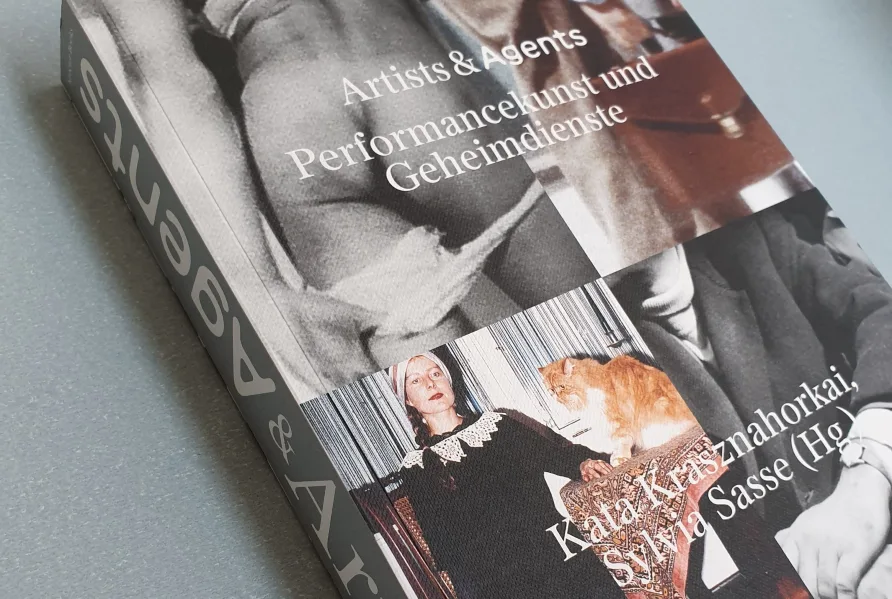Artists&Agents > Interview mit Kata Krasznahorkai
Künstler oder Agent? Der Mann mit langen Haaren und blauem Hemd hat sich in Künstler*innenkreisen um György Galántai als László Algol vorgestellt. Sein wahrer Name lautete jedoch Gusztáv M. Hábermann. Hábermann/Algol arbeitete unter dem Decknamen „Pécsi Zoltán“ für die ungarische Staatssicherheit, am Ende als hauptamtlicher Offizier. Kuratorin Kata Krasznahorkai berichtet von einem besonders spannenden Fall, in dem ein Künstler zugleich Agent war und eine ganze Künstlerszene bespitzelte. “Artists & Agents – Performancekunst und Geheimdienste” ist eine der umfangreichsten und am aufwändigsten recherchierten Ausstellungen in der Geschichte des HMKV. Unter #HMKVathome und auf unserer Webseite beleuchten wir einzelne Themen und Hintergrundgeschichten – für Euren Ausstellungsbesuch von zu Hause aus! #ArtistsandAgents #mediaart #performanceart #secretservices #museumdigital #museumathome #museumfromhome #digamus #digitalculture #kulturstattcorona #stayathome #cuturedoesntstop #kulturinzeitenvoncorona Video: David Figura #HMKVathome
The elaborately researched international group exhibition Artists & Agents – Performance art and Secret Services was on view at the HMKV in Dortmund, Germany. The exhibition, developed in cooperation with the Slavic Seminar of the University of Zurich, is curated by Inke Arns, Kata Krasznahorkai and Sylvia Sasse.
After 1990, many intelligence archives of the former Eastern Bloc countries were opened up for scientific research. This made it possible for the first time to examine the documentation of art through agents and the influence of the intelligence services on artistic work. Above all, the exhibition intends to show the interaction of intelligence actions and performance art in particular, which the totalitarian states of Eastern Europe were most afraid of.
The research for this project has made clear that the intelligence files reveal little about the observed, but much more about the fears and strategies of the observers. These fears and strategies, which can be traced back to the tiniest details of these acts – narrative, verbiage, abbreviations, punctuation, and omissions – are not only of particular importance to the history of art, but also contribute to raising awareness of today’s democratic societies for the dangers and warning signs of dictatorships. The intelligence reports document, sometimes down to the smallest detail, artistic activities; they speak of the monitoring and “processing” (“destruction”, “liquidation”) of the artist scene and reveal information about the active, operative intervention of the state in the artistic production. However, not only the artists used performative techniques; also the agents had to “perform” to gain relevant information about performance art.

To illustrate the relevance of these issues for the present, the 2019 exhibition is taking place in the year which marks the 30th anniversary of the fall of the Iron Curtain. In the GDR, it was the democratic opposition (including many artists) who stormed the Stasi headquarters in 1989 in order to stop the further destruction of the files. In the run-up to the exhibition, extensive and targeted research was carried out in intelligence archives in Hungary, Poland, the Czech Republic, Romania and Germany. The exhibition will focus on examples from these countries from the years 1960-1990.
With: Alexandru Antik (RO), Tina Bara & Alba D’Urbano (DE), Kurt Buchwald (DE), György Galántai / Artpool (HU), Ion Grigorescu (RO), Sanja Iveković (HR), Voluspa Jarpa (CL), Jens Klein (DE), Daniel Knorr (RO/DE), Csilla Könczei (RO), Korpys/Löffler (DE), Jiří Kovanda (CZ), Károly Elekes / Árpád Nagy / MAMÜ group (RO), Simon Menner (DE), Arwed Messmer (DE), Clara Mosch (DE), Orange Alternative (PL), Peng! Collective (DE), Józef Robakowski (PL), Cornelia Schleime (DE), Nedko Solakov (BG), Gabriele Stötzer (DE), Tamás St.Turba (NETRAF-agent) / Gábor Altorjay (HU) and others
As well as files from: Political Police, Switzerland; MfS (Ministry for State Security), DDR; SB (Służba Bezpieczeństwa), VR Poland; ŠB (Štátní bezpečnost), ČSSR; KGB (Komitet gosudarstvennoj bezopasnosti), USSR; BM, Hungary; Securitate, Romania
An exhibition by HMKV (Hartware MedienKunstVerein), Dortmund in cooperation with the Slavic Department of the University of Zurich
Press
The exhibition magazine can be downloaded here!


